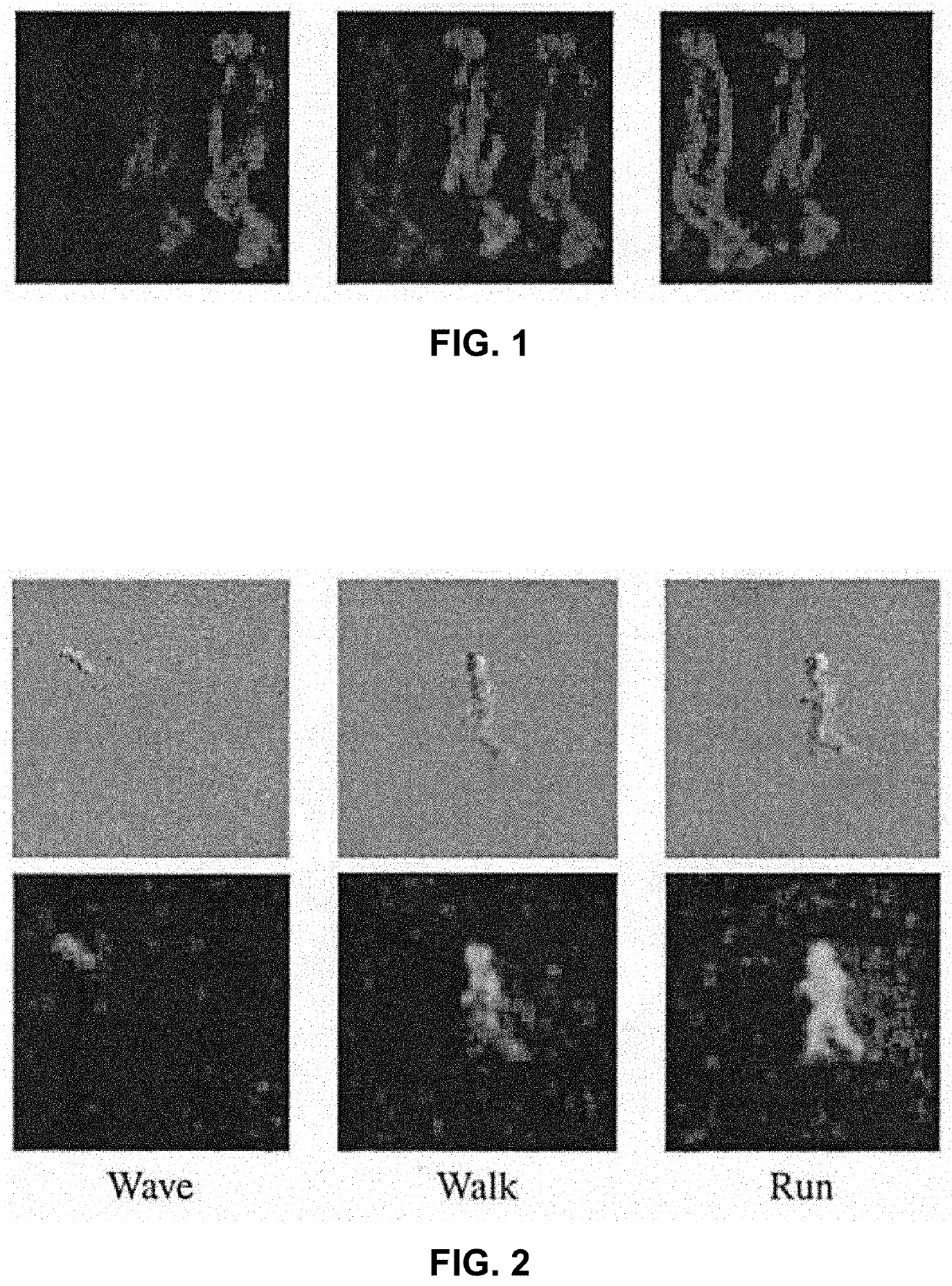Recognition actions on event based cameras with motion event features
a technology of event-based cameras and event features, applied in image analysis, image enhancement, instruments, etc., can solve the problems of typical cost of computational time, and achieve the effects of good accuracy, strong dependency, and expense of computational tim
- Summary
- Abstract
- Description
- Claims
- Application Information
AI Technical Summary
Benefits of technology
Problems solved by technology
Method used
Image
Examples
Embodiment Construction
[0031]Presented herein are exemplary methods for using a system (for example, an autonomous robot) to recognize human actions via a CNN. “Actions” as used herein are low-level movements such as run, walk, or wave, while “activities” as used herein are relatively higher-level movements that compose actions in a specific temporal sequence (e.g., play basketball, eat, brush hair).
[0032]Humans are thought to recognize motion as described by the two-stream hypothesis: the ventral stream performs object recognition based on static visual information, and, running complimentarily, the dorsal stream recognizes motion without necessarily considering visual appearance. Inspired by the neuroscience hypothesis, a two-stream deep neural network architecture for action recognition that performs well on two difficult action recognition databases has been developed that has demonstrated success in both action recognition and activity recognition. All these approaches rely on optical flow, which can...
PUM
 Login to View More
Login to View More Abstract
Description
Claims
Application Information
 Login to View More
Login to View More - R&D
- Intellectual Property
- Life Sciences
- Materials
- Tech Scout
- Unparalleled Data Quality
- Higher Quality Content
- 60% Fewer Hallucinations
Browse by: Latest US Patents, China's latest patents, Technical Efficacy Thesaurus, Application Domain, Technology Topic, Popular Technical Reports.
© 2025 PatSnap. All rights reserved.Legal|Privacy policy|Modern Slavery Act Transparency Statement|Sitemap|About US| Contact US: help@patsnap.com

